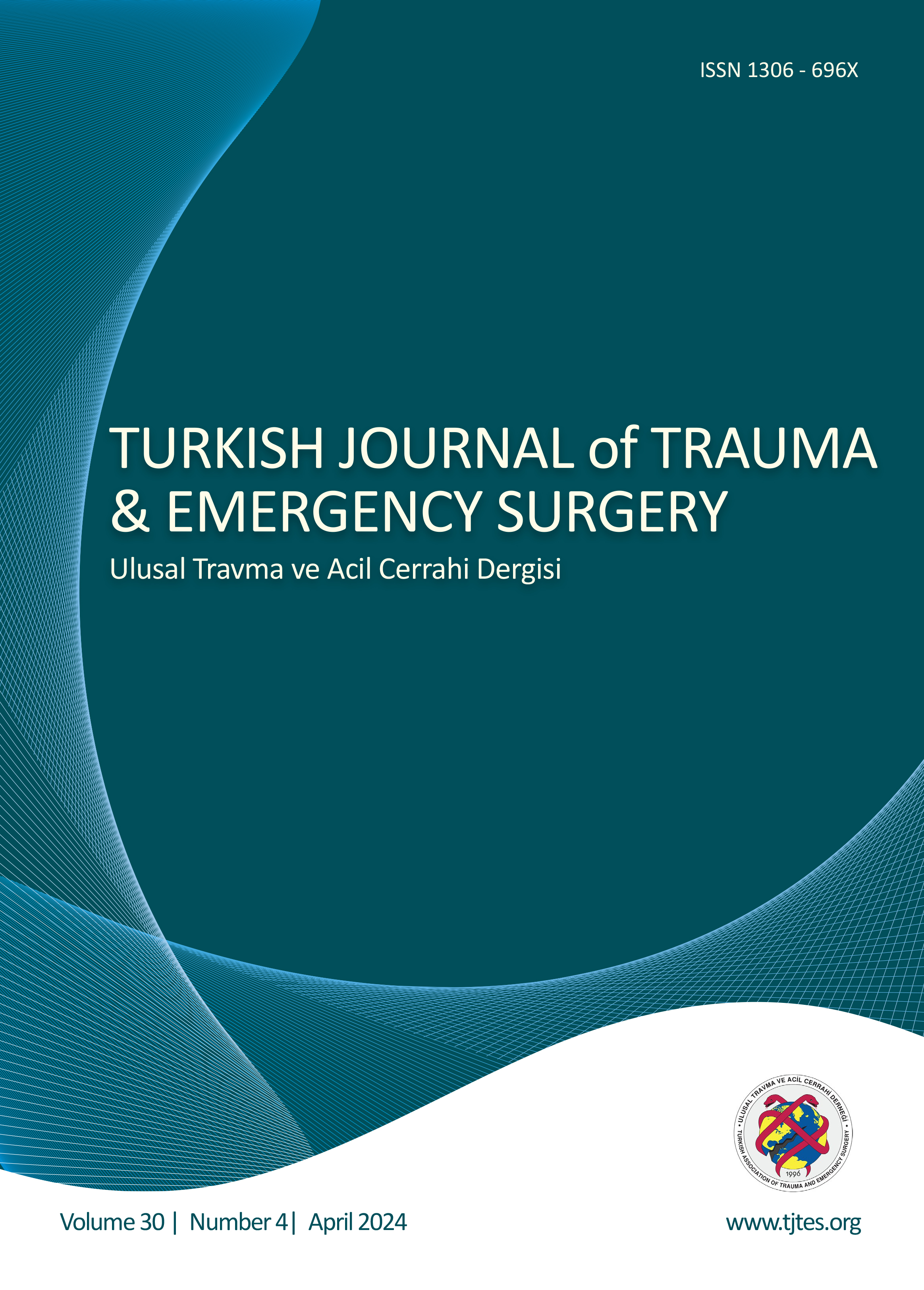Hızlı Arama
Mezenter Ven Trombozuna Yaklaşım: Tek Merkez Deneyimi
Fatih Yanar, Orhan Agcaoglu, Ali Fuat Kaan Gok, Inanc Samil Sarici, Beyza Ozcinar, Nihat Aksakal, Recep Guloglu, Kayihan Gunay, Murat Aksoy, Enver Ozkurt, Mehmet Kurtogluİstanbul Üniversitesi, İstanbul Tıp Fakültesi, Genel Cerrahi Anabilim Dalı, İstanbulAmaç:
Mezenter ven trombozu, akut mezenter iskemi olgularının yaklaşık %5-15inden sorumlu olan ve nadir görülen bir durumdur. Bu çalışmanın amacı, 34 hastalık tecrübemizi paylaşmak ve mezenter ven trombozuna yaklaşımı tartışmaktır.
Gereç ve Yöntem:
Ocak 2007 ve Ocak 2010 tarihleri arasında, acil cerrahi servisimize mezenter iskemi tanısı ile başvuran 34 hasta retrospektif olarak incelendi.Peritonit bulgusu mevcut olan hastalara, başvurularında tanısal laparokopi uygulandı. Ameliyatın bitirilmesine yakın, karın sol alt kadrana 10mm laparoskopi trokarı yerleştirildi. Anastomoz yapılan olgularda ameliyat sonrası ilk 72 saatlik dönemde laparoskopik ikincil bakı yapıldı.Tüm hastalar günde iki kez subkutan 100mg/kg enoxaparin uygulandı. Ven rekanalizasyonu değerlendirilmesi amacıyla tüm hastalara, 6. ve 12. aylarda BT anjiografi görüntüleme yapıldı.
Bulgular:
BT anjiografi ile 25(%73) hastada superior mezenterik ven trombozu, 24(%70) hastada portal ven trombozu ve 12 (%35) hastada splenik ven trombozu saptandı. Peritonit bulgusu olan 11 hastaya tanısal laparoskopi yapıldı. Bu hastaların 8 tanesine ince bağırsak rezeksiyonu ve anastomozu yapılarak ikincil bakı için trokar yerleştirildi. İkincil bakı yapılan hastalardan 2 tanesinde ince bağırsak iskemisi saptanarak re-rezeksiyon gerçekleştirildi.
Sonuç:
Mezenterik ven trombozunun tedavisinde BT anjiografi ile erken tanı, cerrahi ya da cerrahi dışı yöntemlerle kan akımının sağlanması, uygun antikoagulan kullanımı ve yoğun bakım destek tedavileri, hastalığın başarılı bir şekilde yönetilmesinde hayati rol oynamaktadırlar.
The Management of Mesenteric Vein Thrombosis: A Single Institution Experience
Fatih Yanar, Orhan Agcaoglu, Ali Fuat Kaan Gok, Inanc Samil Sarici, Beyza Ozcinar, Nihat Aksakal, Recep Guloglu, Kayihan Gunay, Murat Aksoy, Enver Ozkurt, Mehmet KurtogluIstanbul University, Istanbul Medical Faculty, Department Of General Surgery, IstanbulBackground:
Mesenteric vein thrombosis is a rare occurrence that is responsible for approximately 515% of all cases of acute mesenteric ischemia.The aim of this presentation is to discuss the management of mesenteric vein thrombosis with our experience of 34 patients.
Methods:
Between January 2007 and January 2010, 34 patients who admitted to our emergency surgery department with a diagnosis of acute mesenteric vein thrombosis were assessed retrospectively.Patients with peritoneal signs were initially underwent diagnostic laparoscopy to rule out the perforation or bowel gangrene.We performed a second-look laparoscopy within 72h following the first operation.All patients anticoagulated with enoxaparin 100mg/kg/twice-daily.In 6th and 12th months of controls a CT-angiography was carried out to determine recanalization of the veins.
Results:
CT-angiography revealed superior mesenteric vein thrombosis in 25(73%) patients, portal vein thrombosis in 24(70%) patiens, and splenic vein thorombosis in 12(35%) patients. Eleven patients with peritoneal sign had underwent diagnostic laparoscopy. Among them, in 8 patients small bowel resection and anastomosis was performed and in a trocar was inserted.During the second look laparoscopy in 2 patients small bowel ischemia was found and re-resection was performed.
Conclusion:
Early diagnosis with CT angiography, surgical and non-surgical blood flow restoration, proper anticoagulation, and supportive intensive care are the cornerstones of successful treatment of mesenteric vein thrombosis.
Makale Dili: İngilizce




